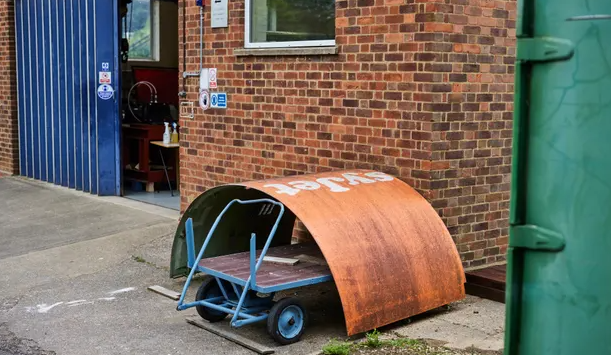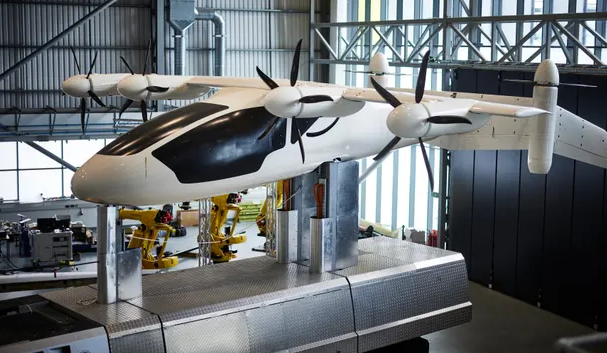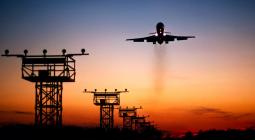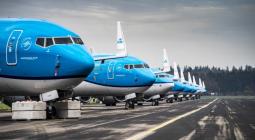‘They said we were eccentrics’: the UK team developing clean aviation fuel

In the search for sustainable flying, Cranfield University might have found the answer in hydrogen.
This row of brick sheds, locked away down overgrown country lanes in Bedfordshire, feels a long way from the glossy boardroom presentations about sustainable aviation. But it was recently the backdrop, in the search for greener flying, to a strange and remarkable scene.
“Anyone passing would have wondered why these people were staring at a pipe and whooping and laughing,” says Bobby Sethi, associate professor of gas turbine combustion at Cranfield University. “But we were almost certainly the only people in the world right then burning anything without producing CO2.”
In the painstaking groundwork of testing whether hydrogen could replace kerosene as a fuel for global aviation, Sethi and team were celebrating a breakthrough.
“We were able to demonstrate successful ignition and safe combustion of pure hydrogen and air at high temperature and pressure – producing no carbon emissions,” he says. Even if, he adds, the passing layperson would have only seen a pipe and some steam.
Like a Harold Ramis character in Ghostbusters, Sethi had long been labouring on experiments in an unfashionable, almost-derided field – before society decided that it was indeed spooked, in this case by jet fumes frying the planet. Who you gonna call? Cranfield’s centre for propulsion engineering.

Sethi recalls the scepticism of even five years ago, when he was pursuing funding for the hydrogen research project, known as Enable H2: “They said we were eccentrics. Now they’re queueing up to be on our advisory board.”
There are broadly three strands of work that the aviation industry is frantically investigating for an environmentally acceptable future. One is to create greener fuels for the large aircraft currently in service. A second is electric flight, which appears feasible for smaller aircraft and short-haul hops. And a third is hydrogen.
Two projects pioneered at Cranfield are using hydrogen in the form of fuel cells to power electric motors and propel planes: ZeroAvia flew a six-seater from here last September, and hopes to scale up the technology for commercial short-haul flights in the coming decades. Another, Project Fresson, is planning to use fuel cells for a green, short-hop passenger service around the Orkney islands as soon as 2023.
But the ambitions for direct combustion of hydrogen are on a bigger scale; whether a radically different plane and propulsion system could replace the modern, kerosene-fuelled passenger jet. Which is where Sethi’s research comes in.
Nothing yet in the sheds looks anything like a plane. The rig here is a unique facility, Sethi says, assembled to show that hydrogen can be clean, safe and efficient for aviation, and produce data showing the optimum temperature and pressure to minimise other harmful emissions such as nitrogen oxides or NOx, a family of highly poisonous gases.

The largest component is a pebble-bed heater pressure vessel, which delivers super-hot air at pressure into a combustion chamber, where the hydrogen is mixed in and ignited. Stacked outside are crates of lasers, ready to be unpacked, to help observe “the shape of the flame” and provide more data.
The combination of lasers and combustible hydrogen, he admits, sounds like a health and safety nightmare (an adjacent control room has a giant red stop button to flood the system with nitrogen). But the experiments here will prove, he believes, that hydrogen is no more difficult or risky to reignite at altitude than kerosene.
“Technically there’s nothing non-feasible in hydrogen – though there’s research and development to be done. The main issue with hydrogen is the cost.”
That will change, he believes, as fossil fuels become environmentally and politically untenable and taxes, subsidy and demand alter. He thinks hydrogen will become a part of aviation “somewhere between 2040 and 2050, depending on the subsidies and political pressure”.
“It’s pressure from green lobbyists, people like Extinction Rebellion, which has made hydrogen come to the front again,” he adds.
The step change in interest in sustainable aviation has re-energised research at Cranfield. Tim Mackley, head of the university’s Aerospace Integration Research Centre, says: “We were always interested in efficiency – but in the last two or three years there’s been a large push to saying what the manufacturers were planning wasn’t really enough.”
Sustainable aviation fuels, or Safs, could make some inroads into reducing carbon emissions, and last month the government announced early development funding for eight UK-based projects, which propose to build plants to convert the likes of household waste, carbon from the atmosphere and sewage into jet fuel at commercial scales.
Safs can only be an intermediate measure, Mackley says. “They are sustainable in terms of their production – but they still burn producing CO2.” But such “drop-in fuels”, which can be added to the mix with current technology still have a valid role now, he argues – not least given the enormous carbon impact of replacing an entire global fleet of aircraft with new types of planes.
For short-haul hops, those could include something like the strange craft that sits centre stage, if very much behind closed doors, in Mackley’s part of Cranfield. This is an experimental eVTOL – an electric vertical takeoff and landing aircraft, a development project in conjunction with Rolls-Royce. Although partial footage of the plane caused some excitement among enthusiasts when leaked on the internet last year, the full picture reveals an issue: it moves by being strapped on to a large truck.

“This was never meant to fly,” says Mackley. Instead, what the model is designed to test is how the rotors react at the difficult moment when turning between vertical liftoff and forward thrust – and, being too big to put in a wind tunnel, the plane is affixed to a hulking ex-German fire truck and driven down Cranfield’s runway. “It was the only thing with the acceleration to get to 80 mph and the power to carry the aircraft.”
Cranfield is one of many players working on eVTOLS, usually in isolation, leading to some very individual designs. Sometimes, on the big reveal, Mackley admits: “Absolutely, I do think what the hell is that.”
But, he says: “To make the best of electric we have to be inventive about how that looks.”
Whether hydrogen or electric, planes will evolve – and flight may well be slower than before, he says. As well as the environment, designers will always need to bear in mind how their planes will work for passengers, he warns: “If you don’t build the concept that airlines like, then it won’t succeed.”





